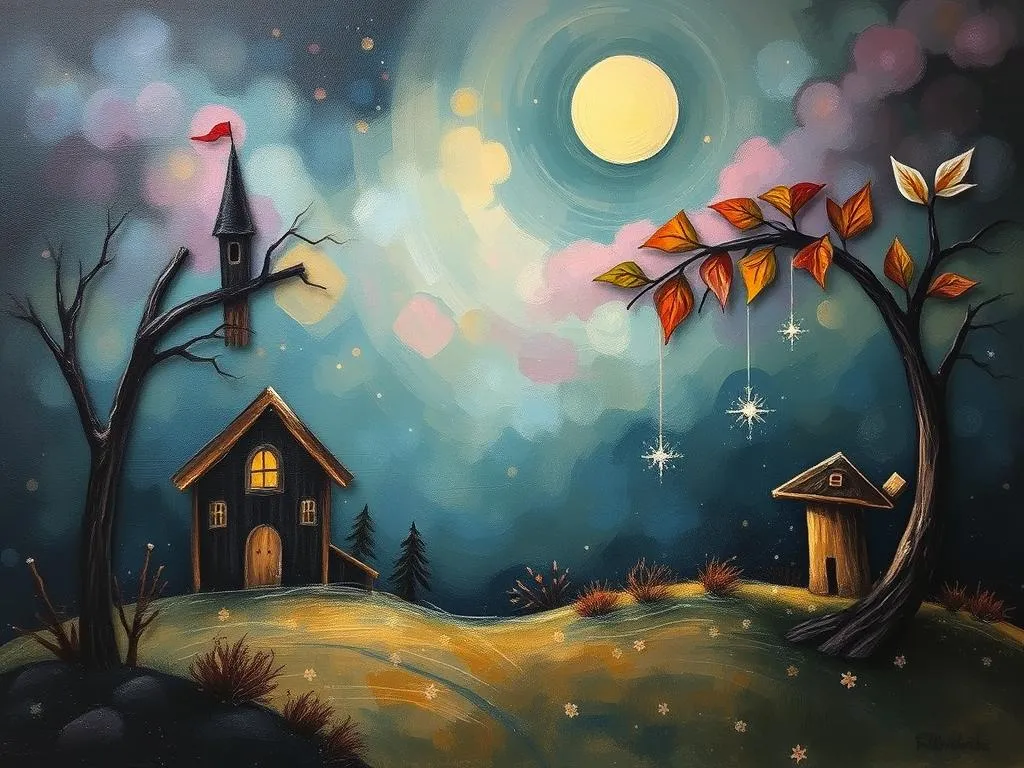
Have you ever woken up in a cold sweat, your heart racing from a dream that seemed to drag you back to a time you’d rather forget? Dreams about a dark past can be haunting, often leaving us with a sense of dread or confusion. Yet, they also hold a treasure trove of insights waiting to be deciphered. They can be the mind’s way of processing unresolved feelings, lingering traumas, or even unacknowledged aspects of ourselves. So, what do these shadowy dreams really mean, and how can we use their messages for personal growth?
As you read on, consider this: just as the night is home to the stars, our darkest moments can illuminate paths to healing. By examining the symbols and experiences tied to our dreams, we can unravel the intricate tapestry of our subconscious minds. Allow me to guide you through the realms of dream interpretation, drawing upon cultural perspectives, psychological insights, and practical advice to transform your nightmares into stepping stones for a brighter future.
Shadows of the Past: Unlocking Symbolic Meanings
When interpreting dreams about a dark past, the first step is to understand the symbols at play. Each element in your dream can represent different aspects of your life, emotions, or psyche. Here are some key symbols to consider:
1. Darkness
Darkness often symbolizes the unknown or repressed emotions. It may suggest that there are feelings or memories you have buried deep within, waiting to be acknowledged. This can indicate fear, guilt, or unresolved conflicts from your past that are demanding your attention.
2. Figures from the Past
Seeing familiar faces from your past can signify that there are unresolved issues with those individuals. These figures may represent aspects of yourself or your experiences with them that need healing. Pay attention to whether these figures elicit feelings of comfort or discomfort, as this can provide insight into your current emotional state.
3. Recurring Locations
Dreams set in familiar yet unsettling places (like your childhood home or an old school) can indicate that you are revisiting a phase of your life that still holds emotional weight. These locations often symbolize memories tied to identity and self-worth, hinting at areas where you might feel stuck or unfulfilled.
4. Chasing or Hiding
If you find yourself being chased or hiding from something in your dream, this can reflect your desire to escape from your past or a feeling of being pursued by unresolved issues. This behavior in dreams often mirrors your waking life, where you may be avoiding confrontation or self-examination.
5. Transformative Symbols
Lastly, look for symbols of transformation, such as butterflies or phoenixes. These can indicate that you have the potential to rise from your past experiences and emerge stronger. This is a powerful reminder that even dark times can lead to personal growth and renewal.
By carefully examining these symbols, you can begin to uncover the underlying messages your subconscious is trying to convey.
Echoes from the Soul: Experiences and Scenarios
Now that we’ve explored the symbolism behind dreams of a dark past, let’s delve into some common scenarios that people encounter. Each scenario provides a unique perspective on how these dreams can manifest and what they might signify.
1. Finding Yourself in Old Places
Imagine dreaming that you’re wandering through your childhood home, but it’s shrouded in shadows. You might feel nostalgic yet uneasy. This dream could indicate that you are grappling with unresolved feelings from your upbringing. It may be time to confront those memories and understand how they shape your current identity.
2. Confronting a Former Self
In another scenario, you might dream of meeting a younger version of yourself, cloaked in darkness and despair. This encounter can symbolize your need to reconnect with your past, acknowledging the pain and growth that have shaped who you are today. It’s an invitation to nurture that part of you with compassion and understanding.
3. A Familiar Face Returns
Suppose you dream of a former friend or partner who treated you poorly. In this dream, they are trying to apologize, yet you feel conflicted. This scenario suggests that you may still be harboring resentment or unresolved emotions about that relationship. It’s a call to explore those feelings and consider how they impact your current relationships.
4. Being Chased by Shadows
Picture yourself running through a dark forest, pursued by shadowy figures. This dream reflects anxiety about your past catching up to you. It could signify that you’re avoiding dealing with certain issues or emotions. Embracing these feelings, rather than fleeing from them, can lead to healing and closure.
5. Transformative Encounters
Finally, consider dreaming of a phoenix rising from ashes, symbolizing renewal and transformation. This dream serves as a powerful reminder that your past, no matter how dark, can fuel your growth. Embrace the lessons learned from your experiences and allow them to guide you toward a brighter future.
These scenarios illustrate how our dreams act as mirrors, reflecting our emotional landscapes and guiding us toward self-discovery.
Illuminating the Path: Personal Growth from Darkness
Understanding the meaning behind dreams of a dark past can be a transformative journey, leading to personal growth and healing. Here are some practical insights to help you navigate this process:
1. Journaling Your Dreams
Keep a dream journal to record your dreams as soon as you wake up. This practice can help you identify patterns, symbols, and recurring themes that may emerge over time. By putting your thoughts on paper, you can facilitate deeper reflection and understanding of your subconscious.
2. Engaging in Self-Reflection
Take time to reflect on the emotions tied to your dreams. Ask yourself what aspects of your past you may be avoiding or need to confront. Engaging in self-reflection can lead to greater awareness and help you process unresolved feelings.
3. Seeking Professional Guidance
If your dreams consistently bring up difficult emotions or memories, consider seeking support from a therapist or counselor. Professional guidance can provide a safe space to explore these feelings, helping you to heal and move forward.
4. Meditation and Mindfulness
Incorporate meditation or mindfulness practices into your routine to create a space for self-discovery. These practices can help you connect with your inner self, allowing you to confront fears and anxieties related to your past in a gentle, supportive manner.
5. Embracing Forgiveness
Work on cultivating forgiveness—both for yourself and others. Recognizing that everyone has flaws, including yourself, can pave the way for emotional freedom. Forgiveness doesn’t mean forgetting; it means releasing the hold that past events have on you.
By integrating these insights into your life, you can transform your dark past into a source of strength and resilience.
As we conclude this exploration into the meanings behind dreams of a dark past, remember that the shadows do not define you. They are merely chapters in your story—stories that can teach us about ourselves and illuminate our paths forward. Embrace the lessons held within your dreams, for they are the keys to unlocking a future filled with light, hope, and growth.
Reflect on this: In the depths of darkness, the seeds of transformation lie waiting for the warmth of understanding to help them bloom.







